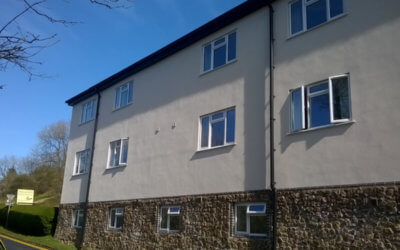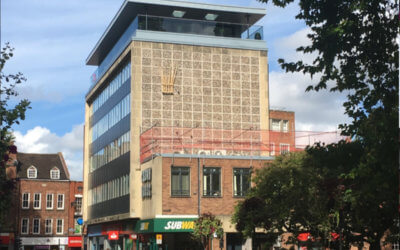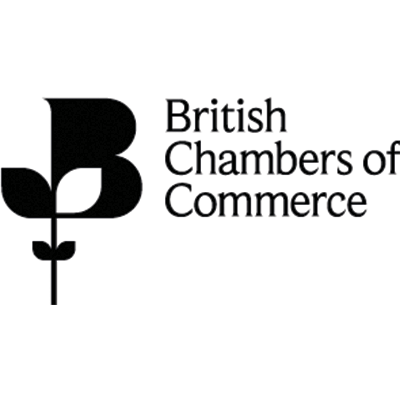Structural Engineers Reports
We have a great depth of expertise and are able to use this to help you…
CORONAVIRUS UPDATE
For latest news please see Projects & News
Our Services
Structural Engineers
We act in the capacity of Structural Engineers for a wide range of projects…
Party Wall Surveyors
In need of a party wall surveyor or are unsure if one is necessary…
Structural Engineers Reports
We have a great depth of expertise and are able to use this to help you…
Clerks of Works
We check that the building works are being constructed in accordance with…
Structural Engineers Reports
We have a great depth of expertise and are able to use this to help you…
Coronavirus Update
Please see Projects & News
Our Services
Structural Engineers
We act in the capacity of Structural Engineers for a wide range of projects…
Structural Engineers Reports
We have a great depth of expertise and are able to use this to help you…
Party Wall Surveyors
In need of a party wall surveyor or are unsure if one is necessary…
Clerks of Works
We check that the building works are being constructed in accordance with…
Why Choose Us?
Marshall Structures is a well established & growing Structural Engineering business based in Worcestershire offering services across the whole country. We provide professional services for many structures and building types from state of the art to historic building, with projects ranging from domestic to major commercial plans.
Building, structural and subsidence investigation, foundation design, engineering advice and design are just some of the important professional services we provide.
Whether you are buying a new home or are having some structural work done to your property, it can be a stressful time. We aim to remove some of your stress rather than add to it. There are plenty of people in the property and building sector who aren’t in much of a hurry and will slow the process down for you. We make a site visit and will have your report with you – within one week!
Latest Projects
Parabolic Arch – RHS Spring Show, Malvern
by admin | Apr 26, 2019 | Projects
Marshall Structures were appointed to design 3 parabolic arches – the largest of these being around 9m long and 4m tall. The arches formed the centre piece of Sebastian Conrad and Kate Rees’ garden, “What If In Support of Rees Foundation”. This garden went on to win a gold medal at the show.
Malvern Hills Hotel, Malvern
by admin | Mar 31, 2019 | Projects
This project featured a large extension to the North end of the Malvern Hills Hotel. For this, Marshall Structures were appointed to design a large retaining wall and a steel frame structure to form the proposed 3 storey extension. The finished product has gone on to provide the hotel with several guest and staff bedrooms and additional kitchens and lounges.
Parabolic Arch – RHS Spring Show, Malvern
by admin | Apr 26, 2019 | Projects
Marshall Structures were appointed to design 3 parabolic arches – the largest of these being around 9m long and 4m tall. The arches formed the centre piece of Sebastian Conrad and Kate Rees’ garden, “What If In Support of Rees Foundation”. This garden went on to win a gold medal at the show.
Malvern Hills Hotel, Malvern
by admin | Mar 31, 2019 | Projects
This project featured a large extension to the North end of the Malvern Hills Hotel. For this, Marshall Structures were appointed to design a large retaining wall and a steel frame structure to form the proposed 3 storey extension. The finished product has gone on to provide the hotel with several guest and staff bedrooms and additional kitchens and lounges.
Crown House, Shrewsbury
by admin | Feb 2, 2019 | Projects
One of Marshall Structures’ biggest projects to date was the conversion of Crown House from a tired office block to a complex featuring 14 luxury apartments, providing a much-needed improvement to the site. The work involved in this project included large amounts of steel work and timber design.
Get a Quote For Your Project
What Do Our Clients Say?
Many of our customers find us through our connections with established architects, estate agents, solicitors and builders. They tell us they like to recommend us because we are friendly, efficient, competent and professional.
So, if you are planning some structural work, perhaps taking a wall out or needing a structural survey so you can buy or sell a house – please do give us a call or email where we would be happy to answer any questions you may have.
Client Testimonials
“We at Qu-est Design and Planning have worked with Marshall Structures for many years now covering everything from simple beam calculations to much more complicated whole building structural solutions, including the addition of 2 new floors on a 1970’s former office building creating a spectacular penthouse apartment and even including the late addition of a roof top spa.
Paul and the team have always been attentive, practical and happy to rise to the challenges we throw at them.”
Qu-est Design and PlanningFrequently Asked Questions
What is a Surveyor and what is a Structural Engineer?
A Surveyor will give you a general report on the overall health of your house. A surveyor will usually advise you when you need a Structural Engineer to come and look at/inspect and advise how to put right a part of your house that structurally weak.
What’s a Structural Survey?
Although Architects and those directly involved in the building/construction industry are familiar with the expert skills of Chartered Structural Engineers, the general public tend not to know what Structural Engineers do.
Structural engineering is a speciality discipline within Civil Engineering. Chartered Structural Engineers analyse, design, plan and research structural components and structural systems to achieve design goals and to ensure the safety and comfort of users or occupants. They also design structures not deflect or vibrate beyond acceptable limits. Consideration is also given to durability of materials against possible deterioration which may impair performance over the design lifetime.
Their work takes account of mainly safety, technical, economic and environmental concerns, but they may also consider aesthetic and social factors.
They will advise on new builds; on the safe removal of walls, chimney breasts, etc.; on groundwork issues/types of foundation and solutions; on refurbishing old and/or damaged buildings; and much more. Usually this will involve a site visit following which they provide design details (to show layout of beams, walls, posts, foundations with sizes; connection joints; truss layout; and any reinforcement that might be needed to the foundations) and they prepare calculations showing the sizes of the building elements needed.
So, a Structural Engineer is a professional who is sufficiently qualified and experienced to advise on structural issues and provide the necessary design and calculations to ensure buildings are safely constructed – in order that they are strong enough and stable enough to resist all appropriate structural loads (e.g.: gravity, wind, rain, snow, temperature, earth pressure, seismic effects, and traffic) so that they do not collapse, warp, sink, etc. and so that loss of life or injury is prevented or reduced.
Hence, “Structural Engineering is about ensuring a structure is capable of standing up and withstanding the pressures of use that the building is subjected to – including the potential weather conditions for the locality.”
But not all ‘Structural Engineers’ are fully qualified or experienced.
When employing a Structural Engineer always ensure that they are “Chartered”.
To quote the Institution of Structural Engineers, “Chartered Members have achieved a high level of personal achievement and professional competence. Chartered Structural Engineers are entitled to use the designation MIStructE.”
Paul Marshall is a Chartered Structural Engineer and member of the Engineering Council
It depends entirely upon the complexity of the project, on problems being experienced with your property and/or your intentions for the property. Basically, you will need a Structural Engineer whenever assessment as to safety is necessary in respect of a new structure or alterations affecting an existing building.
Here are some examples of when you would need a Structural Engineer:
- If you notice (or a Surveyor has expressed concern regarding) cracking, bulging or subsidence.
- If you wish to modify a building by removing load bearing walls or chimney breasts.
- If you wish to extend the property, outwards or into the loft.
- If you intend cutting timbers out of a roof structure.
- If you intend widening doorways or windows.
- If you intend digging basements or lowering floors.
- If you plan to build on soft or contaminated ground, or near large trees.
Not only will the Structural Engineer be able to give you valuable advice, they will provide you with the necessary design details and calculations. A Structural Engineer’s report on your property not only provides peace of mind but it can also help when you come to sell the property especially if the buyer’s solicitor asks difficult questions about previous defects such as subsidence and about any alterations that have been made to the property.
Note: Most house extensions require some sort of structural calculation as existing external wall(s) will be punctured to provide access to the extension. Also, if you are renovating an existing building, a Structural Engineer will need to make a site visit and prepare a document proving to Building Control that the existing structure is sound and suitable for the building’s new usage.
What is the difference between a Surveyors Report and a Structural Engineers Report
If you are buying a property, it is always advisable to arrange for a survey to be carried out by a Chartered Surveyor, particularly if the property is more than 10 years old.
If you are buying the property with a mortgage, you should not rely solely on the mortgage valuation report as this is prepared for the mortgage lender to confirm the security of the loan. This may not highlight all specific defects or inadequacies.
There are two principal types of Building Survey that are recognised by The Royal Institute of Chartered Surveyors.
1. Homebuyer Survey and Valuation
This survey has a standard format and aims to report on all parts of the building that can easily be seen by the Surveyor.
The survey endeavours to comment on the overall condition of the property and to identify which areas are of concern and may require further investigation.
The survey is considered appropriate for conventional type properties, including houses, flats and bungalows, which are in reasonable condition and built in about the last 150 years.
Items such as services including drainage, wiring and gas, etc., are not included in these surveys.
The Homebuyer Survey should identify any major defects and associated cost implications. It should include items such as damp and woodworm and an assessment of the quality of any insulation or damp-proofing. This survey will also provide a valuation of the property.
It is common for the survey to provide recommendations for further investigation by other specialists in respect of certain defects.
Marshall Structures are regularly referred by local Surveyors to provide advice or recommendations relating to specific structural defects identified in the Surveyors Report.
2. Building Survey
This survey is more comprehensive and therefore more expensive than the Homebuyer Survey and is appropriate for all residential properties. It will provide a much fuller indication of the construction and condition of the property.
A Building Survey is generally required for older buildings or buildings that are in a poor state of repair or have been extensively altered or converted. The survey should include all visible defects and likely cost of the repairs and testing together with recommendations relating to insulation, damp, damp-proofing and woodworm.
The Survey Report will also provide comprehensive information regarding the construction of the property and information about its location.
The Survey Report does not normally include a valuation of the property but can be arranged as an extra item.
It is common that the survey may recommend further investigation to be carried out by a specialist in respect of certain defects.
Marshall Structures are regularly referred by local surveyors to provide advice and recommendations relating to specific structural defects identified in the Survey Report.
3. Valuation
If you are not seeking a mortgage to buy a property which appears to be in good condition or is of recent construction, a further cheaper option may be a Valuation Report.
This should provide a simple valuation of the property with comments on any major defects. This is similar to a mortgage valuation for a bank or building society.
Any major defects identified may need to be referred to a specialist in the area of work. Marshall Structures are often contacted to provide advice relating to structural defects.
When might I need a Structural Engineer?
Generally there are 2 types of Structural Engineer’s Report:
- Full Structural Appraisal Report
- Report on Specific Structural Defects
Full Structural Appraisal Report
This report is normally required when the overall structural condition of the property needs to be confirmed.
This report is sometimes recommended by Surveyors, Valuers, or Solicitors in connection with the purchase or re-mortgage of a property.
It may be that there is concern as to the overall structural condition of the property.
Marshall Structures carry out these surveys on a regular basis. We would visit the property and carry out a detailed internal and external inspection of all unobscured and accessible areas, including the roof space and cellars.
Our report would include a description of the property and its general structure and identify any apparent defects giving our opinion as to their cause and structural significance. It would also provide recommendations for any remedial work.
In some cases it may be necessary for us to carry out further and more detailed investigations in order to confirm the likely cause of any defects. These may include the excavation of external trial holes to confirm the size and depth of the foundations and nature of the ground material, a CCTV inspection of below ground drainage to confirm its soundness or internal opening up to confirm the size and quality of structural members.
This report would not include comments relating to electrical and mechanical services or any other non-structural related item.
Depending upon workload, Marshall Structures endeavour to carry out an inspection 5 to 10 working days following instruction and would normally issue 2 copies of the report 3 working days later.
If you are buying a property and do not require a mortgage, we would recommend that you engage a Surveyor to report on the property prior to purchase, particularly if the property is more than 10 years old.
Report on Specific Structural Defects
This report is provided when a speciific defect or defects have been identified.
In some cases this report is recommended by a Surveyor or Valuer following their own full general inspection of the property. Alternatively, this report may be requested direct from the owner when a defect becomes apparent.
Marshall Structures would visit the property and carry out a visual inspection of the defect(s) and provide a short report giving an opinion as to the cause and structural significance.
This report would provide recommendations for repair or remedial works as necessary. In some cases we may need to carry out further more detailed investigations as outlined above for the full structural appraisal.
Quality standards are in place to protect you, as a member of the public, as well as the reputation of the industry.
Therefore, it pays to carry out checks before you employ anyone who calls themselves a Structural Engineer.
You get what you pay for!
What things should I check before engaging the services of a Structural Engineer?
- Are they a Chartered Structural Engineer registered with the Engineering Council?
Not all ‘structural engineers’ have passed the Institution of Structural Engineers’ very high standard exams.
Those who have done so can use the letters MIStructE after their name.
If they are also registered with the Engineering Council they can use the letters CEng after their name.Paul Marshall has been a Chartered Engineer and Member of the Engineering Council since 1999.
- Are they adequately insured/do they carry both Professional Indemnity and Public Liability Insurance?
Marshall Structures carry both Professional Indemnity and Public Liability Insurance.
- What experience do they have as a Structural Engineer?
For information about Marshall Structures Resume.
- Can they provide you with testimonials or references from current or previous clients?
The majority of Marshall Structures work comes from recommendations or directly from repeat clients including Architects, Surveyors, Builders and private individuals.
- You may wish to obtain more than one quotation for structural engineering services
Marshall Structures provide competitive rates. With our extensive experience we are able to provide practical and economical solutions.
Important:
Ask the Structural Engineer when his/her information will be available, initially as well as subsequently. Also how quickly they will respond if there are any queries after the work commences, and will there be additional costs?
When else might I need a Structural Engineer
- If the work simply involves, for instance, the removal of a load bearing wall we would be able to give you an indication of our fee for our services. We would visit your property, take the necessary details and then provide calculations and details suitable for Building Regulations, to enable a builder to carry out the works.
- If the work is more extensive, such as building an extension, we would most likely refer you to a local Architect. He/she would give you a quotation for their fees. They would then draw up plans and, if necessary, make a Planning Application. After Planning Permission had been granted, the Architect or ourselves will be able to provide a quote for Structural Engineering design. We would then provide the calculations and details suitable for Building Regulations to enable a builder to carry out the works.
- After you have received both the Architect’s drawings and specifications, and our calculations and details, you should obtain competitive quotations for the work from three local builders.
- The Full Plans Building Regulations application is generally required for larger projects such as extensions or new buildings.
- It is necessary to send two copies of the plans and application forms to your local Building Control.
Your payment is made in two stages: one when you send the plans and one after the first inspection has been carried out by the Building Inspector. - The approval decision can take up to five weeks. When the approval has been granted works can then commence.
- The Building Notice application usually applies to smaller works such as the removal of a loadbearing wall.
- The Building Notice form should be sent to Building Control with a block plan showing the proposals in relation to existing buildings. A single fee (equivalent to the total Building Regulations fee) is sent with this application.
- You may commence the works two days after submitting the application.
- With the Building Notice there is more emphasis on the builder and if the completed work does not meet Building Control requirements significant costly and disruptive remedial works may be required to achieve the necessary standards and requirements.
- Building Control would also request any relevant structural calculations and details relevant to the work.
These should therefore be obtained from Paul Marshall prior to commencement of the works.
When do I need a Party Wall Surveyor?
When do I need a Party Wall Surveyor – Building Owners
If you are carrying out work close to your neighbour’s property you may have a legal obligation to notify them in respect of the Party Wall etc Act 1996.
The Act gives you rights and responsibilities whichever side of the ‘wall’ you are on, whether you or your neighbour is doing the work.
The Act does not affect any requirement for Planning Permission or Building Regulations approval.
The Act does not only relate to the party wall, it also covers:
- A wall of any building on the boundary line between two properties.
- A wall which is common to two or more properties.
- A garden wall close to the boundary.
- Floors and ceilings of flats etc.
- Excavation close to a neighbour’s property.
It is always better to reach a friendly agreement with your neighbour prior to the start of any work rather than resorting to the law.
If you notify your neighbour in writing of intended works and do not receive their written agreement within 14 days, a dispute is deemed to have arisen.
A Party Wall Surveyor or Surveyors will then need to be appointed to resolve the dispute. You would be responsible for settlement of the fees of the Surveyor or Surveyors. This process could delay the work significantly.
For further useful and more detailed information relating to the Party Wall etc Act 1996, we would recommend that you download The Party Wall etc Act 1996 explanatory booklet.
When do I need a Party Wall Surveyor – neighbour
See link to Planning Portal – party wall act: explanatory booklet
What’s a Clerk of Works?
A clerk of Works is appointed to oversee a whole building project from start to finish – from architect plans/contractors, to inspect all materials, responsible for workmanship etc. and to assist in the review of plans, specifications, designs, contracts. They also make sure that schedules are maintained. See link to Clerks of Works Handbook.
Why would I need a Clerks of Works?
The role is based on the impartiality of the Clerks of Work to ensure value of money for the client – rather than the contractor. This is achieved by vigorous and detailed inspection of material and workmanship throughout the building process.
Paul Marshall is a member of the Institute of Clerks of Work (MICWCI). He has lots of experience as a Clerks of Work for large and small projects.








